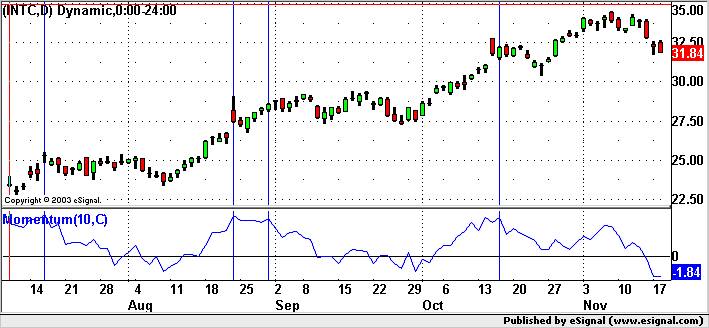|

This INTC chart shows how Momentum acts (or causes the underlying stock to act depending on your perspective) during a solid uptrend. As INTC rallied, Momentum moved up thus confirming the move. But when Momentum reached a peak level, a signal was given that the stock wasn't necessarily going to reverse, but some sideways trading was in order. Each time Momentum peaked, INTC moved sideways.
» back to top
|

